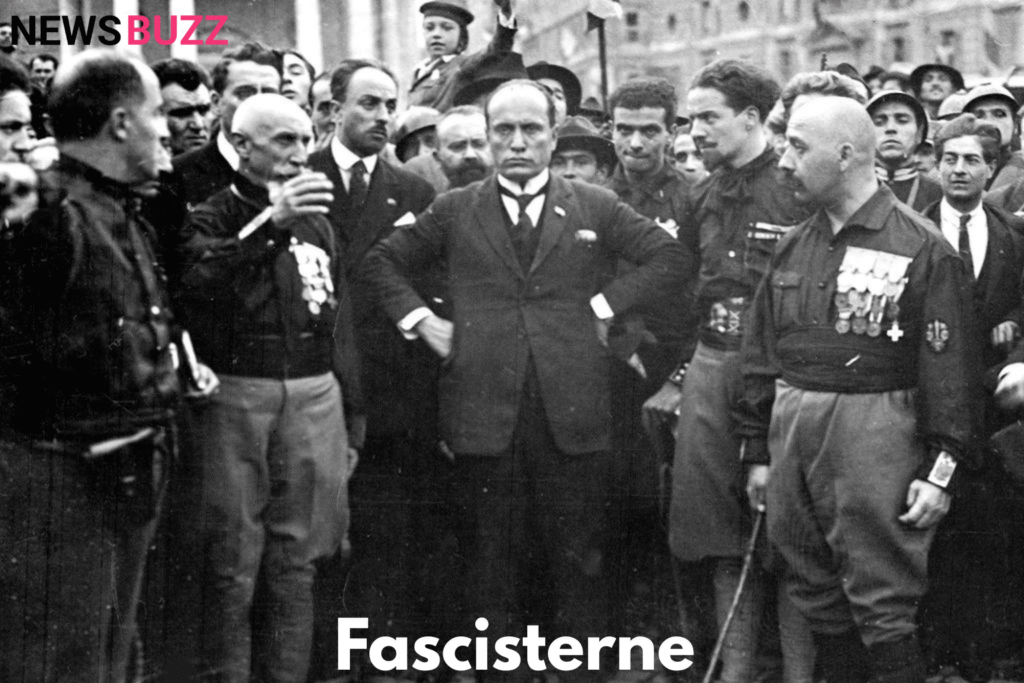Introduction
The term fascisterne, meaning the fascists in Danish, has carried both powerful and controversial connotations throughout history. It refers to individuals and groups who aligned themselves with fascism, an ideology marked by authoritarianism, nationalism, and the rejection of democracy. While the word is often used historically to describe supporters of fascist regimes in the 20th century, it also continues to appear in modern debates where its meaning is stretched beyond its original roots.
Understanding who fascisterne were, what they represented, and how their actions shaped the world is vital to interpreting both past and present political landscapes. Their story includes both positive and negative perceptions—discipline and order on the one hand, but brutality and suppression of freedom on the other.
Quick Bio of Fascisterne
| Aspect | Details |
|---|---|
| Meaning | Danish term for “the fascists” |
| Origin | Fascism emerged in Italy under Mussolini in 1919 |
| Core Beliefs | Authoritarianism, nationalism, militarism, anti-democracy |
| Historical Role | Played central roles in Italy, Germany, Spain, and smaller movements |
| Legacy | Defeated in WWII but remains a warning in political discourse today |
The Origins of Fascism and the Emergence of Fascisterne
Birth of Fascism in Italy
Fascism first emerged in Italy under Benito Mussolini after the First World War. The movement promised to restore pride, power, and unity to a country that had been humiliated by war and internal chaos. Fascisterne in Italy saw themselves as warriors of the nation, committed to sacrificing individual freedoms for collective strength.
For many Italians, the fascist promise of order, jobs, and security was appealing during a time of economic despair. Fascisterne embraced strict discipline, nationalism, and loyalty to their leader. This created a sense of unity but also suppressed diversity, democracy, and dissent.
Expansion Across Europe
The ideology quickly spread beyond Italy. In Germany, Spain, and other parts of Europe, fascisterne rose to prominence under leaders who admired Mussolini’s model. Adolf Hitler’s Nazi regime in Germany took fascist ideas to an even more extreme level, combining them with racial purity doctrines. The spread of fascism highlighted both the appeal and the danger of authoritarian solutions in times of crisis.
Characteristics of Fascisterne
Authoritarian Leadership
At the heart of fascism was the belief in strong, centralized power. Fascisterne pledged loyalty to one leader, whose authority was considered unquestionable. This emphasis on hierarchy and control gave stability but eliminated political freedoms.
Nationalism and Militarism
Fascisterne glorified the nation above all else. They saw war and struggle as natural and even beneficial for strengthening the state. Their militaristic outlook led to aggressive expansion and conflicts that shaped world history.
Anti-Democratic Ideals
Democracy was seen as weak and inefficient. Fascisterne rejected open debate, opposition parties, and individual rights. Instead, they promoted unity through obedience and conformity.
Fascisterne in Denmark and Scandinavia
Local Movements
During the 1930s and 1940s, Denmark and other Scandinavian countries also experienced small fascist movements. Though never as dominant as in Italy or Germany, these groups admired authoritarian regimes and promoted nationalist ideas. Some Danes even joined German forces during the Second World War, believing they were part of a larger struggle for Europe’s future.
Influence and Legacy
While fascisterne in Scandinavia never gained full power, their presence revealed how far-reaching the ideology had become. Their activities remain a reminder of how fragile democracy can be during times of uncertainty.
Positive and Negative Perceptions of Fascisterne
Positive Sentiments
Supporters of fascisterne argued that they brought order, discipline, and unity in societies that were previously divided and chaotic. They promised strength, economic revival, and a sense of pride in national identity.
Negative Realities
On the other hand, the actions of fascisterne often resulted in violence, censorship, and loss of human rights. Their regimes silenced opposition, persecuted minorities, and led nations into devastating wars. The negative consequences far outweighed the temporary promises of stability.
The Decline of Fascisterne
After World War II
With the defeat of Nazi Germany and Fascist Italy in 1945, fascisterne lost political power on a large scale. The horrors of the Holocaust and the destruction caused by fascist regimes discredited the ideology worldwide.
Survival in Memory and Debate
Even after their decline, the memory of fascisterne continued to influence politics. The term is still used in debates to criticize authoritarian behavior, sometimes fairly and sometimes as an exaggeration. The word has thus become a powerful label with deep historical weight.
Lessons from Fascisterne for the Modern World
Dangers of Authoritarianism
The story of fascisterne warns us about the risks of sacrificing freedom for the sake of security. When leaders promise quick solutions through total control, history shows that the results can be devastating.
Importance of Democracy
Protecting open debate, individual rights, and the balance of power remains crucial. The failure of fascisterne demonstrates why democracy, despite its imperfections, offers a safer and more just path for societies.
Conclusion
The history of fascisterne is a story of both hope and horror, order and oppression. They rose during times of crisis, offering people a sense of unity and strength, but at the cost of freedom and humanity. Their legacy serves as a cautionary tale for today’s world: the dangers of blind loyalty, excessive nationalism, and the rejection of democratic principles are as relevant now as they were in the past.
By studying fascisterne, we gain insight into how societies can be tempted by authoritarianism and why it is vital to guard against such forces in the future.
FAQ
Who were fascisterne?
Fascisterne were individuals and groups who supported fascism, an authoritarian and nationalist ideology that rejected democracy and promoted strong centralized power.
Where did fascisterne first emerge?
They first emerged in Italy under Benito Mussolini after the First World War, before spreading to other European countries such as Germany and Spain.
Did fascisterne exist in Denmark?
Yes, small fascist groups existed in Denmark and Scandinavia, though they never reached the level of influence seen in Italy or Germany.
What were the positive views about fascisterne?
Supporters believed they brought order, unity, and national pride during times of crisis.
What negative impact did fascisterne have?
They suppressed freedom, censored opposition, promoted violence, an



